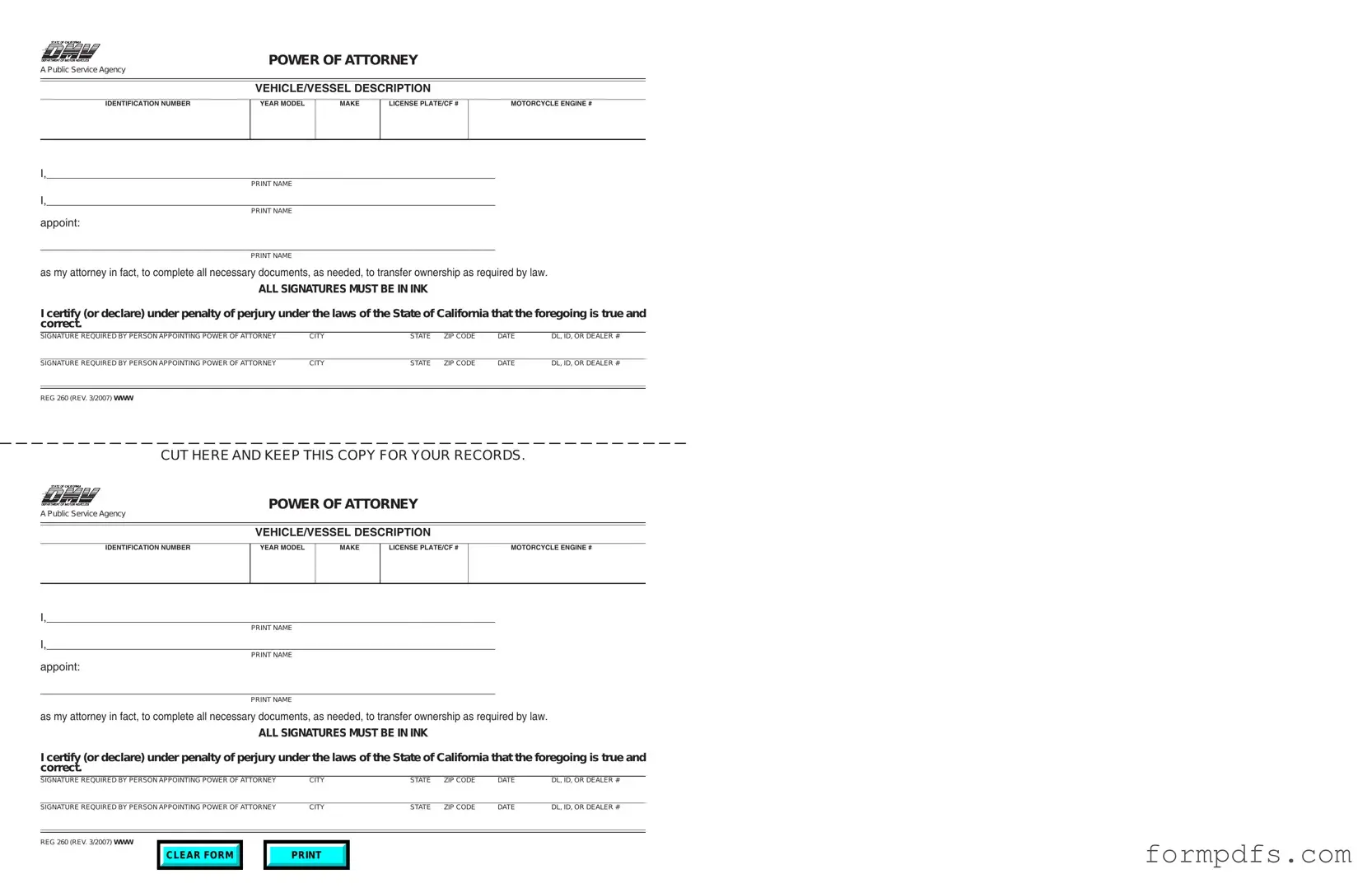What is the Vehicle POA REG 260 form?
The Vehicle POA REG 260 form is a Power of Attorney document specifically designed for vehicle transactions in the United States. It allows one person to authorize another to act on their behalf regarding the ownership, registration, or transfer of a vehicle. This form is often used when the vehicle owner cannot be present for the transaction.
Who can use the Vehicle POA REG 260 form?
This form can be used by any vehicle owner who needs to delegate authority to another individual. This could include situations where the owner is out of state, unable to attend a transaction, or simply prefers to have someone else handle the paperwork.
How do I fill out the Vehicle POA REG 260 form?
To fill out the form, provide the necessary details such as the vehicle owner's name, the name of the person being granted power of attorney, and specific details about the vehicle, including its make, model, and VIN. Ensure that both parties sign and date the form to validate it.
Do I need to have the Vehicle POA REG 260 form notarized?
Notarization is not always required, but it is recommended to add an extra layer of authenticity. Some institutions may require a notarized form for their records, so check with the entity where the form will be submitted.
Is there a fee associated with using the Vehicle POA REG 260 form?
There is no fee for completing the Vehicle POA REG 260 form itself. However, there may be fees associated with the transaction you are authorizing, such as registration fees or title transfer fees, depending on your state’s regulations.
How long is the Vehicle POA REG 260 form valid?
The validity of the Vehicle POA REG 260 form typically extends until the specific transaction is completed or until the vehicle owner revokes the power of attorney. It’s advisable to check the state regulations for any specific time limits.
Can I revoke the Vehicle POA REG 260 form once it is signed?
Yes, you can revoke the Vehicle POA REG 260 form at any time. To do this, you should provide a written notice of revocation to the person you granted power of attorney and any relevant institutions that may have received the form.
What should I do if the person I granted power of attorney to is unable to complete the transaction?
If the designated person cannot complete the transaction, you may need to appoint someone else or handle the transaction yourself. Ensure that you communicate clearly with all parties involved to avoid any confusion.
Where can I obtain the Vehicle POA REG 260 form?
The Vehicle POA REG 260 form can typically be obtained from your state’s Department of Motor Vehicles (DMV) website or office. Many states also provide downloadable versions of the form online for convenience.
